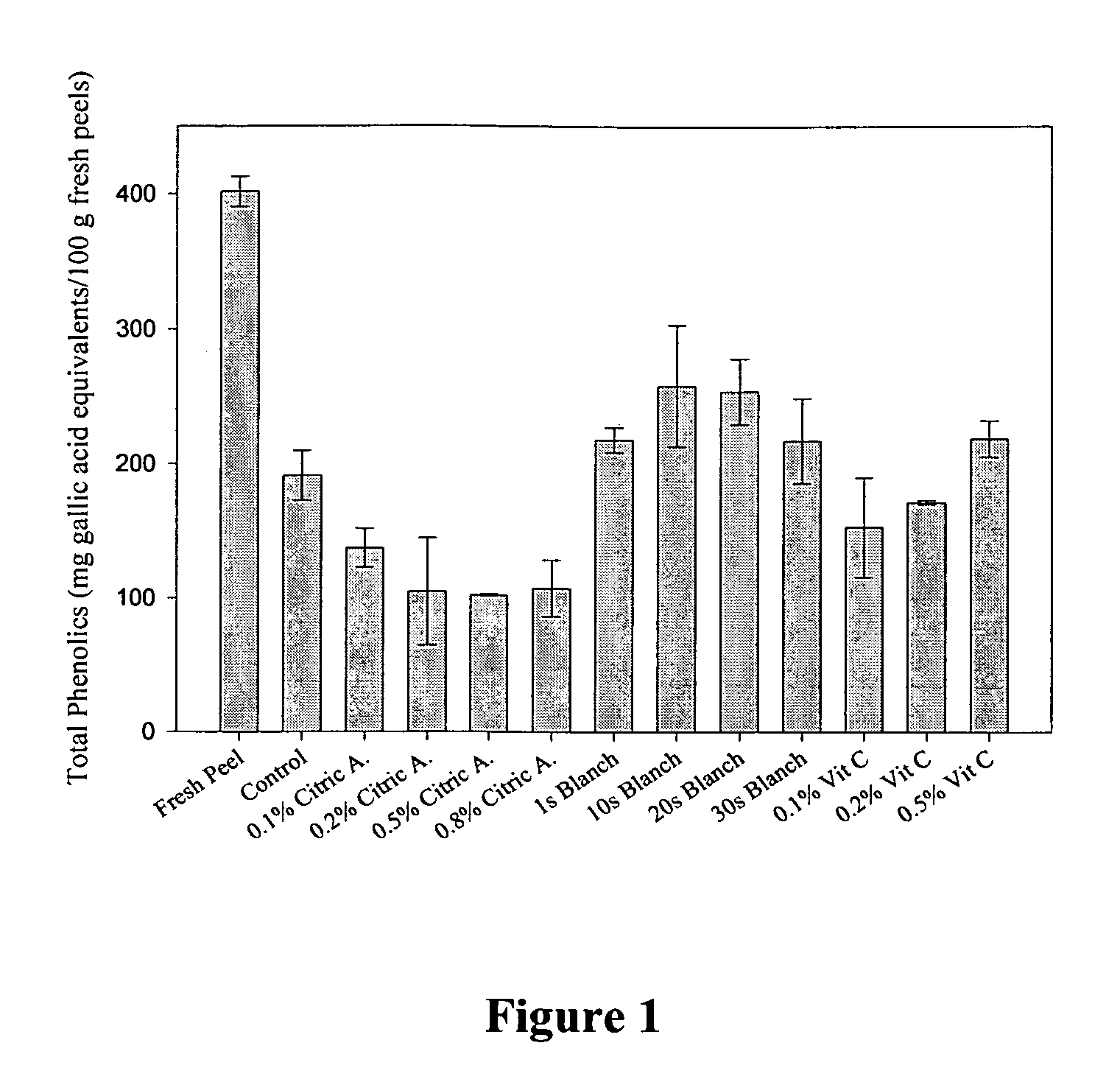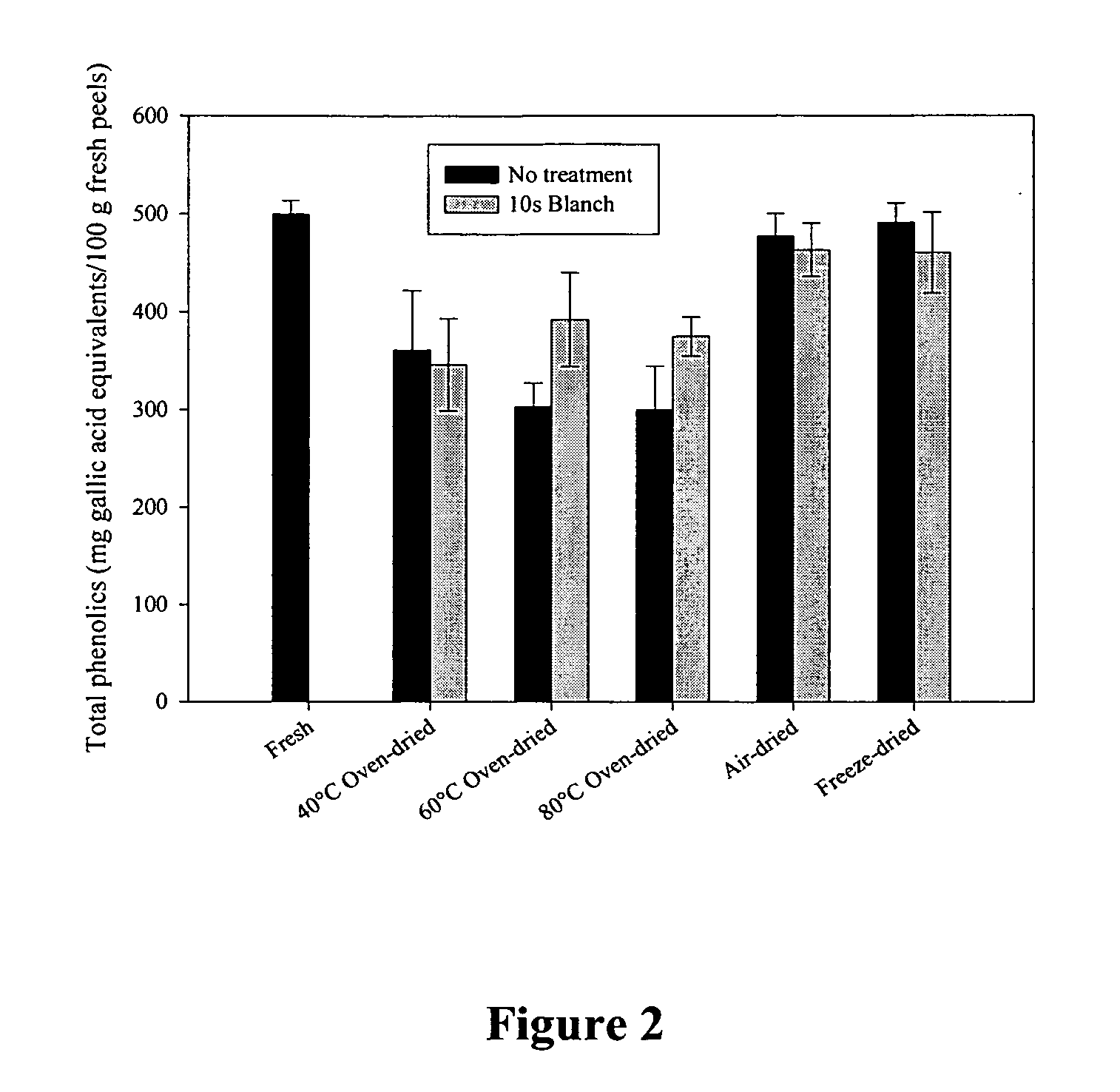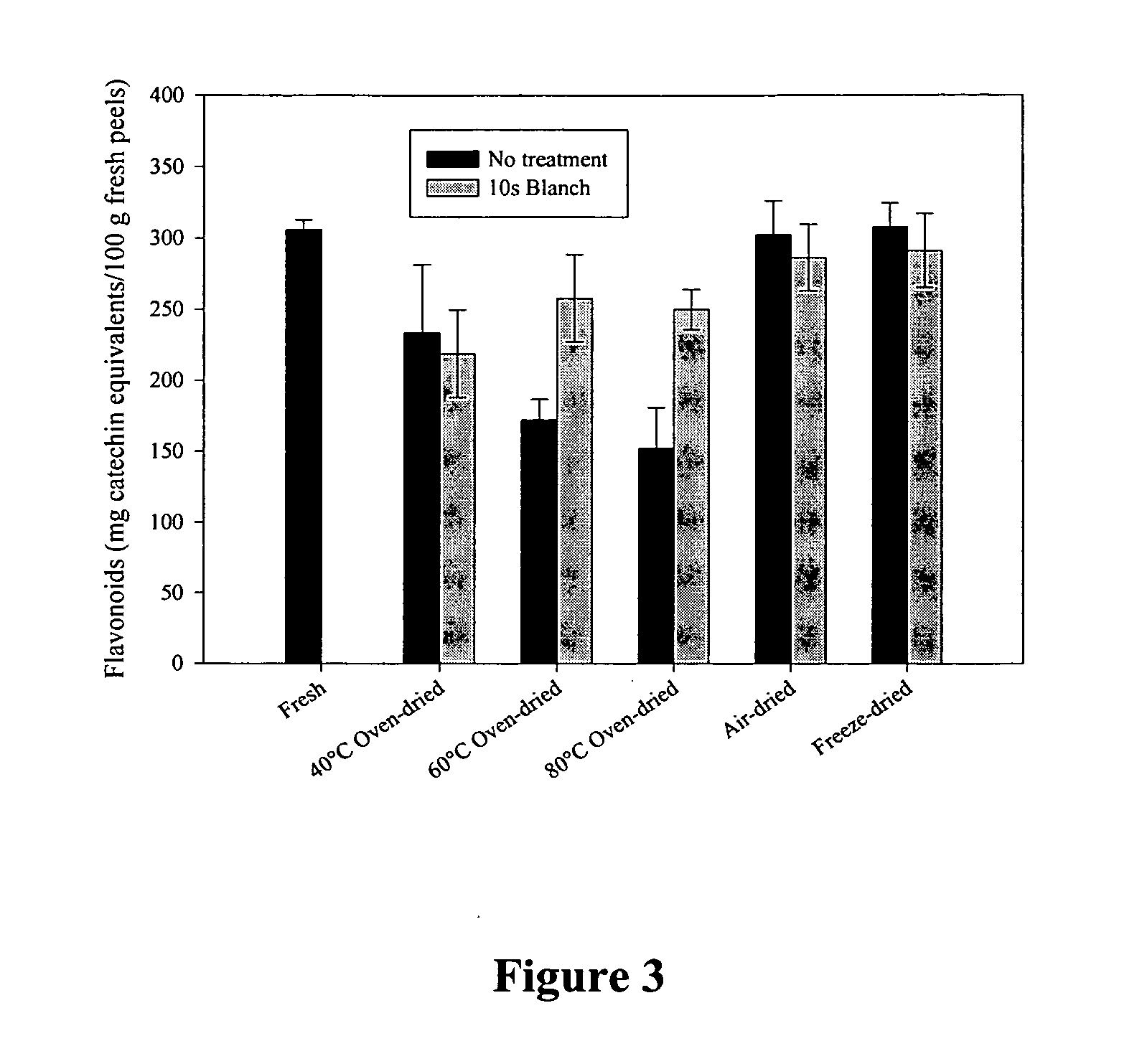Apple peel powder, methods of making, and uses thereof
- Summary
- Abstract
- Description
- Claims
- Application Information
AI Technical Summary
Benefits of technology
Problems solved by technology
Method used
Image
Examples
example 1
Chemicals
[0046] Sodium nitrite, (+)-catechin, Folin-Ciocalteu reagent, citric acid, ascorbic acid, and α-keto-γ-methiolbutyric acid (KMBA) were purchased from Sigma Chemical Company (St. Louis, Mo.). Sodium carbonate, sodium hydroxide, ethanol, acetone, and potassium phosphate were obtained from Mallinckrodt (Paris, Ky.). Aluminum chloride, potassium chloride, and sodium acetate were purchased from Fisher Scientific (Pittsburgh, Pa.) and gallic acid from ICN Biomedical Inc. (Costa Mesa, Calif.). 2,2′-Azobis(amidinopropane) (ABAP) was obtained from Wako Chemicals (Richmond, Va.). The HepG2 cells were from the American Type Culture Collection (ATCC) (Rockville, Md.) and the MTS-based Cell Titer 96 non-radioactive cell proliferation assay was from Promega (Madison, Wisc.). Williams Medium E (WME) and fetal bovine serum (FBS) were purchased from Gibco Life Technologies (Grand Island, N.Y.).
example 2
Samples
[0047] Rome Beauty apples were obtained from Red Jacket Orchards (Geneva, N.Y.). The apples were kept in modified atmosphere storage until purchased. The apples were washed and dried before experimentation.
example 3
Determination of Pretreatment Method
[0048] Five randomly selected apples were peeled using an Apple Master apple parer (Norpro®, Everett, Wash.). The peels were left untreated or were treated with citric acid dips, ascorbic acid dips, or boiling water dips (blanched). For the citric acid treatments, the five apple peels (approximately 75 g) were dipped for 3 minutes in 500 mL of 0.1, 0.2, 0.5, and 0.8% citric acid solutions, then drained. The ascorbic acid treatments involved dipping the peels in 0.1, 0.2, and 0.5% ascorbic acid for 3 minutes and draining. The blanching times were 1, 10, 20, and 30 seconds. After blanching, the peels were dipped in a cooling bath of distilled water for 10 seconds. The peels were placed in stainless steel wire baskets in a VWR 1325F Mechanical Convection oven (VWR Scientific Products, Bridgeport, N.J.) at 60° C. and remained there until they reached constant weight (approximately 13 hours). This temperature was chosen because earlier trials showed i...
PUM
 Login to View More
Login to View More Abstract
Description
Claims
Application Information
 Login to View More
Login to View More - R&D
- Intellectual Property
- Life Sciences
- Materials
- Tech Scout
- Unparalleled Data Quality
- Higher Quality Content
- 60% Fewer Hallucinations
Browse by: Latest US Patents, China's latest patents, Technical Efficacy Thesaurus, Application Domain, Technology Topic, Popular Technical Reports.
© 2025 PatSnap. All rights reserved.Legal|Privacy policy|Modern Slavery Act Transparency Statement|Sitemap|About US| Contact US: help@patsnap.com



